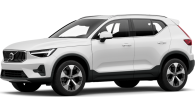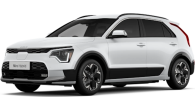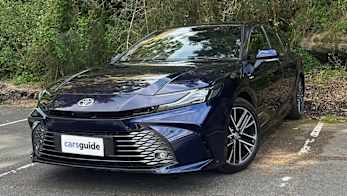Land Rover’s Discovery Sport occupies a close to unique position in Australia’s premium, mid-size SUV market.
At less than 4.6m long it sits at the more compact end of the segment, but offers seating for seven. Okay, Land Rover labels the layout ‘5+2’, a refreshingly up-front concession that the third row is a kids-only zone. But it’s there.
Then the Disco Sport adds all-wheel drive with multi-mode ‘Terrain Response 2’ off-road capability. Go anywhere Land Rover cred, combined with seven-seat flexibility, and a price tag sitting just over $60K, before on-road costs.
There are several mainstream equivalents, and even some more modestly priced Euro alternatives. So, is this Land Rover, which received a substantial mid-life upgrade in 2019, a demonstrably superior package? We lived with one for a week to find out.
Land Rover Discovery Sport 2020: P200 S (147Kw)
| Engine Type | Turbo 4, 2.0L |
|---|---|
| Fuel Type | Premium Unleaded Petrol |
| Fuel Efficiency | 8.1L/100km (combined) |
| Seating | 7 |
| Price From | $41,470 - $48,840 |
| Safety Rating |
|
Is there anything interesting about its design?
8 / 10
Launched globally in 2014, and arriving here a year later, the Discovery Sport was given a comprehensive makeover in mid-2019, with an evolution of its exterior design, a refreshed interior, improved tech, and optimised packaging.
But at first glance you won’t notice a huge difference. The car’s overall proportions are unchanged, the signature clamshell bonnet remains in place, as does the familiar, broad, body-coloured C-pillar, and a strong, horizontal character line running the length of the car (just under the windows).

Although it looks like the roofline tapers to the rear, it’s more a case of the base of the windows (car designers call it the beltline) rising towards the back of the car.
Styling tweaks include a new headlight shape (they’re now LED), as well as a revised lower grille and front air vents, bringing the baby Disco more in line with its larger, and newer, Land Rover siblings.
Changes at the rear are even more subtle, with a rearranged tail-light design the only discernible difference.

Interior highlights include two large digital displays - a 12.3-inch instrument cluster, and a 10.25-inch ‘Touch Pro’ multimedia screen - as well as a new centre console design.
The previous rotary gear select dial has been replaced by a more conventional shifter, buttons and controls have been made softer and set in ‘hidden-until-lit’ gloss black panels, and the door grab handles have been relocated and reshaped to be… grabbier.

A reprofiled steering wheel with sleek black control panels attached is also new, but as with the exterior, big-ticket items like the flowing dashtop, main dash panels, and key storage areas are unchanged.
Overall, the interior feel is clean, comfortable, and precisely composed. The Land Rover design team is on its game.
How practical is the space inside?
8 / 10
As mentioned, the Disco Sport isn’t huge on the outside (4.6m long), but interior packaging is impressive. A dash which slopes markedly back towards the base of the front screen helps open up the front passenger space, with 12-way electric front seats (with two-way manual headrests) adding extra flexibility
There’s plenty of storage on offer, including two cupholders sitting side-by-side in the centre console, and a drop-in cover for them is supplied if you’d prefer a shallow, dished tray. There’s also a lidded storage box (which doubles as an armrest) between the front seats, a generous glove box, an overhead sunglasses holder and door pockets with enough room for bottles.

The second-row seat is amazingly roomy. Sitting behind the driver’s seat, set for my 183cm height, I had ample leg and headroom, and at getting on for 2.1m from side to side, the Discovery Sport punches above its weight division in terms of width.
Which means you can realistically seat three adults across the middle row, for short to medium length trips, at least. Adjustable air vents for back-seaters are a welcome inclusion, as are a pair of cupholders in the fold-down centre armrest, map pockets on the front seatbacks, and decent door bins.
If you’re willing to launch a UN-style diplomatic mission to negotiate relative space for those in the second- and third-row seats, the manual slide and recline function for the centre row will act as a handy mediator.
As mentioned earlier, Land Rover makes no bones about the fact that the third row is best for kids, but having that occasional seating capacity can be a godsend in helping the car accommodate extra family friends or relatives. There are cup/bottle holders and small elasticised storage pockets for each ‘way-back’ seater.
Getting in and out is relatively painless because the back doors open to almost 90 degrees, and the centre row seats fold forward easily.

Worth noting the third-row seat is standard, and removing it is a no-cost option, the trade-off being the move to a full-size spare wheel and tyre rather than the otherwise standard space-saver.
Boot capacity comes in three sizes, depending on which seats are raised or lowered. With all seats upright, load space is a modest 157 litres, enough for a few grocery bags or some soft luggage.
Drop the 50/50 split-folding third row, via a user-friendly release mechanism, and 754 litres opens up. Our three-piece hard suitcase set (36, 95 and 124 litres) slipped in with room to spare, as did the jumbo size CarsGuide pram.
Fold away the third row as well as the 40/20/40 split second row, and no less than 1651 litres will have you thinking about starting a furniture moving side hustle.
There are sturdy tie-down anchor points at each corner of the load floor, and a handy netted pocket behind the driver’s side wheel tub.
In terms of media connectivity and power options, there’s a 12-volt outlet in the front and centre rows, and a USB port up front.
‘Our’ car was fitted with the ‘Power pack 2’ option ($160), which adds USB sockets for the second and third rows, as well as a wireless charging bay up-front ($120).
Towing capacity for a braked trailer is 2200kg (with 100kg towball download), 750kg unbraked, and ‘Trailer Stability Assist’ is standard. The stability assist system detects trailer sway movements at speeds above 80km/h, and manages them through symmetric and asymmetric braking of the car.
Does it represent good value for the price? What features does it come with?
7 / 10
At $60,500, before on-road costs, this entry-level Discovery Sport S P200 is at the lower end of the price ballpark occupied by a slew of small-medium premium SUVs, including the Audi Q5, BMW X3, Jaguar F-Pace, Lexus NX, Merc GLC and Volvo XC60.
But not all of them are all-wheel drive, and precisely none of them offer seating for seven.
Dip into the mainstream and a bunch of similarly sized seven-seaters pop up; think Hyundai Santa Fe, Kia Sorento, Mazda CX-8, and Mitsubishi Outlander.
Then there are those living between these two worlds, like the Peugeot 5008, Skoda Kodiaq, and VW Tiguan Allspace.
So, this Disco Sport’s value equation is critical in allowing it to stand up to its five-seat luxury rivals, stand apart from its seven-seat mainstream competitors, and get ahead of everything in between.

To that end, aside from active and passive safety tech (covered in the Safety section), this entry-level model’s standard equipment list includes, rear fog lights, auto LED headlights, rain-sensing wipers, 18-inch alloy wheels, electrically-adjustable front seats, a leather-trimmed steering wheel, ambient interior lighting, and ‘Luxtec’ faux leather and suedecloth seat trim..
Then you can add, dual-zone climate control, six-speaker audio (with eight-channel amp), Android Auto, Apple CarPlay and Bluetooth connectivity, sat nav, the ‘Online Pack’ (browser, WiFi, and smart settings), 10.0-inch media touchscreen, central TFT instrument display, adaptive cruise control (with speed limiter), as well as keyless entry and start.
Overall, a solid but not eyebrow raising suite of standard features for a car that’s crested the $60K barrier.
What are the key stats for the engine and transmission?
8 / 10
The Land Rover Discovery Sport S P200 is powered by a 2.0-litre, four-cylinder, turbo-petrol engine producing 147kW at 5500rpm and 320Nm from 1250-4500rpm.
It’s part of Jaguar Land Rover’s family of modular ‘Ingenium’ diesel and petrol engines, built around multiples of the same 500cc cylinder design.

The all-alloy unit features variable intake and exhaust cam timing, variable (intake) valve lift and a single, twin-scroll turbo.
Drive goes to all four wheels via a nine-speed (ZF-sourced) automatic transmission, and front and rear diffs, with torque on demand to the rear axle.
How much fuel does it consume?
7 / 10
Claimed fuel economy for the combined (ADR 81/02 - urban, extra-urban) cycle is 8.1L/100km, the S P200 emitting 188g/km of CO2 in the process.
Over close to 400km of city, suburban and quite a bit of freeway running, we recorded 10.1L/100km, which is a passable result.
Minimum fuel requirement is 95 RON premium unleaded and you’ll need 65 litres of it to brim the tank.
What's it like to drive?
8 / 10
Land Rover claims 2.0-litre turbo-petrol versions of the Discovery Sport will accelerate from 0-100km/h in 9.2sec. Anything under 10 seconds is reasonably swift, and the S P200 makes good use of all of its nine gear ratios to keep things on the boil.
Maximum torque of 320Nm isn’t huge pulling power, especially when we’re talking about shifting a close to 2.0-tonne (1947kg) seven-seater. But the twin-scroll turbo’s contribution means every one of those torques (actually newton-metres) is available from just 1250rpm, all the way to 4500rpm. So, mid-range performance is energetic enough.
If you really want to press on, peak power (147kW) arrives at a lofty 5500rpm, just 500rpm away from the engine’s nominal rev ceiling. At which point, having remained a relatively low-key whirr in the background, the engine makes its aural presence felt.

The Cleary family (of five) took to the highway and some rural back roads for a weekend away during the test period, and open road performance was stress-free, with more than enough oomph for easy cruising and (well-planned) overtaking.
Seamlessly shuffling drive between the front and rear axles, the Terrain Response 2 system coped admirably with graded, but slightly rutted dirt roads, the car feeling secure and composed at all times.
Suspension is strut front, multi-link rear, and ride quality is good, especially in the context of an off-highway capable SUV. And the seats proved supportive and comfy over long stints.
Standard 18-inch alloy rims are shod with 235/60 Michelin Latitude Tour HP rubber, an on-road focused tyre which proved grippy and surprisingly quiet.

Electrically-assisted steering delivers impressive feel and accuracy, while the brakes, by ventilated disc all around (349mm fr/325mm rr), are progessive and strong.
And although we didn’t push into hardcore off-road conditions, those keen on doing so will want to know the car’s wading depth is 600mm, obstacle clearance is 212mm, approach angle is 25 degrees, ramp angle is 20.6 degrees, and the departure angle is 30.2 degrees. Enjoy the rough stuff.
Warranty & Safety Rating
What safety equipment is fitted? What safety rating?
8 / 10
The Land Rover Discovery Sport scored a maximum five ANCAP stars when it was assessed in 2015.
Active safety tech includes the usual suspects like ABS, EBD, EBA, traction control, stability control, and roll stability control, with higher level systems including, AEB (low- and high-speed front), lane keep assist, blind-spot monitoring, traffic sign recognition and adaptive speed limiter, adaptive cruise control, front and rear parking sensors, a reversing camera, and driver condition monitoring.
Off-road and towing tech includes ‘Hill Descent Control’, ‘Brake Hold’, ‘All Terrain Progress Control’, and ‘Trailer Stability Assist.’
An impressive suit, but… you’ll have to pay extra for, a 360-degree surround camera, park assist, blind-spot assist, rear cross traffic alert, and tyre pressure monitoring.
If a crash is unavoidable, you’ll be protected by seven airbags (front head, front side, side curtain covering all rows, and driver’s knee).
The Discovery Sport is also equipped with an airbag under the bonnet to minimise pedestrian injuries. Big tick for that..
There are three top tether points to secure child seats/baby capsules across the centre row seat, with ISOFIX anchors on the two outer positions.
What does it cost to own? What warranty is offered?
7 / 10
Land Rover offers a three year/100,000km warranty in Australia, with 24-hour roadside assistance included for the duration.
That’s well off the mainstream pace, which sits at five years/unlimited km, but on the upside, three years paint surface cover, and a six year anti-corrosion warranty are part of the deal.
Service requirement is variable, with a range of on-board sensors feeding into a service interval indicator in the vehicle, although you can use 12 months/20,000km as a guide.
A fixed ‘Land Rover Service Plan’ set at five years/102,000km is available for $1950, which isn’t too shabby at all.
Verdict
Flexible, dynamically capable, and nicely put together, the Land Rover Discovery Sport S P200 packs a lot into a small/medium SUV package. It gives some ground to its premium competitors on equipment, but has a seven-seat ace up its sleeve, with genuine off-highway ability to boot.
Pricing Guides


















.jpg)






































.png)








.png)




.jpg)




